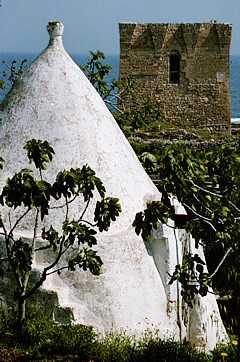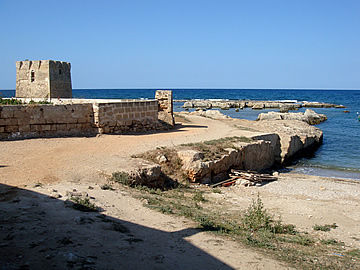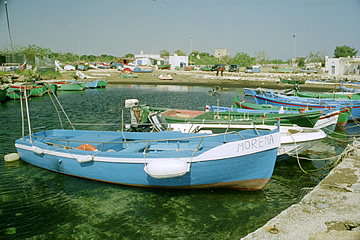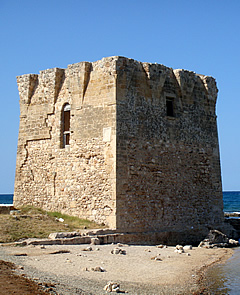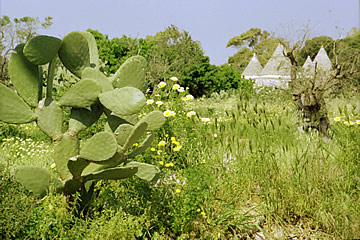

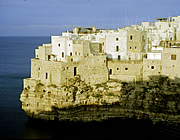
A rugged eastern coastline, fishing ports, two very different castles and a famous battlefield and ancient ruins - lots to see.
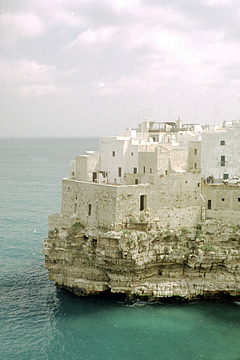
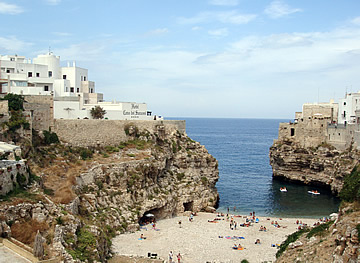
In 2004 we stayed in the lovely coastal town of Polignano a Mare, in the cliff top hotel Covo dei Saraceni. We had a lovely corner room with three balconies overlooking the sea and the small cove of Cala Porto and with a fabulous view of the white buildings crowded on top of the cliff.
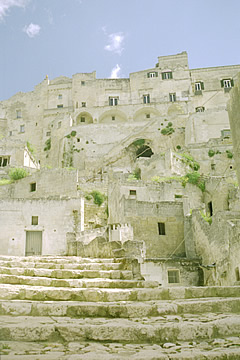
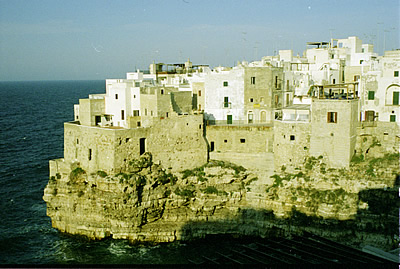
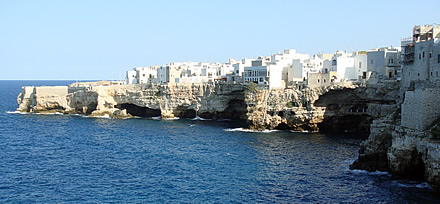
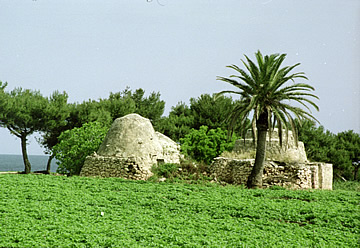
The town was originally built by the Greeks, possibly as long ago as the fourth century BC. In Roman times it served as a stopping point along the Trajan Way which connected Rome and Brindisi. South about 20kms are the remains of the Graeco-Messapian town of Egnazia. The Messapians were a local tribe which had settled in the region as far back as 7000 BC when they arrived in the region from their Balkan homeland. They were still here when the Greeks came in the 8th century BC to set up a string of settlements along the Adriatic coast.
Egnazia dates from the 13th century BC but little remains apart from foundations. We stopped off to visit in 2004 and found an extensive site including tombs and the town, very well excavated.
Along the coast north of Polignano are numerous trulli, many derelict.
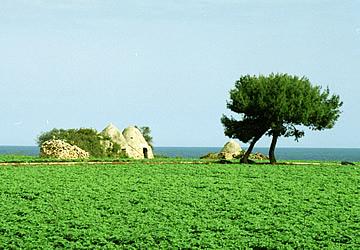
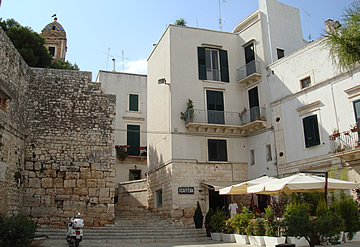
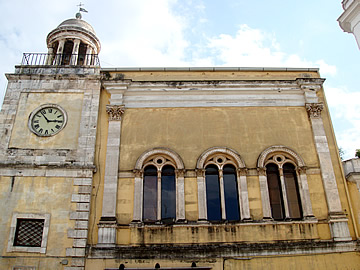
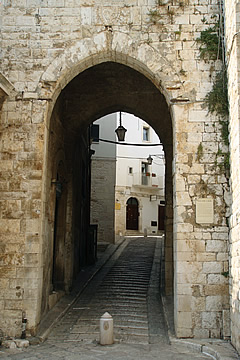
A few kilometers west of Polignano is the medieval town of Conversano which we visited in 2009. Once ruled by Norman counts, in the Middle Ages it was under the control of the Acquaviva d'Aragona family until the early nineteenth century. It was they who developed the palaces, churches and monasteries which can still be seen today.
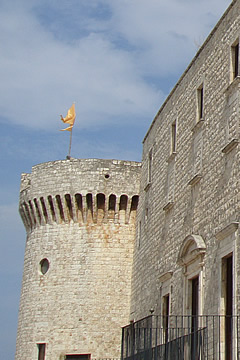
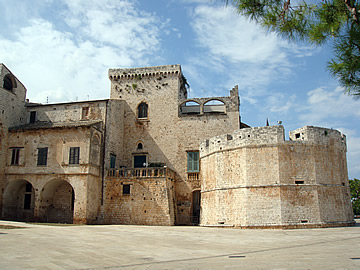
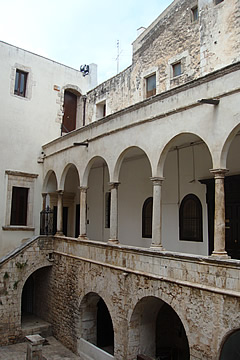
The castle, next to the sea, was originally built by the Norman Count Geoffrey the Elder when he was in dispute with his brother Robert in the eleventh century but the Acquaviva counts turned it into a more elegant residence in the thirteenth century.
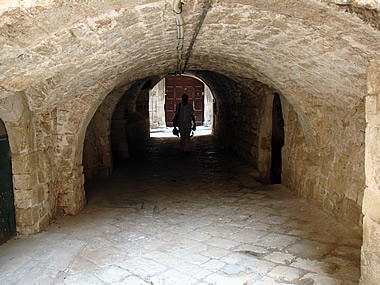

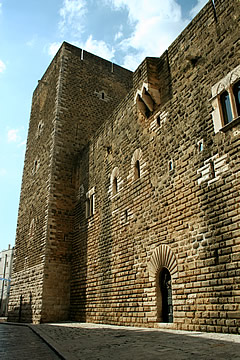
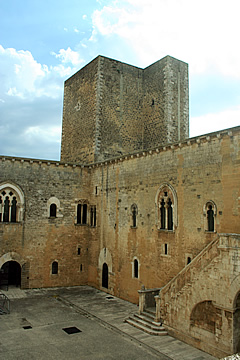
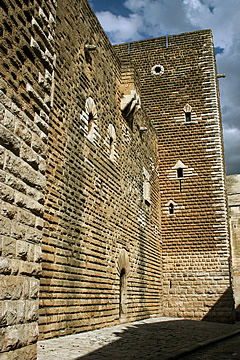
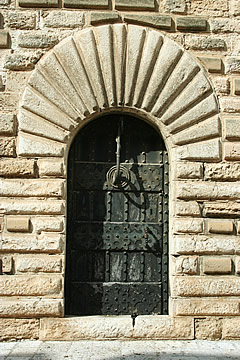
Two very different castles, Castello Svevo in Bari and Castel del Monte in splendid isolation on a hill some 40km west of Bari.
Castello Svevo (visited 2009) began life as a Roman fort, was incorporated by the Byzanztines into their fortifications of the city of Bari, a Norman castle was erected in the 12th century and later given a Renaissance makeover by Isabella of Aragon - this is essentially the structure we see today.
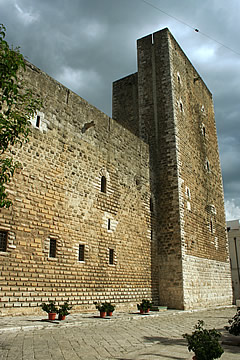
Castello Svevo stands on the edge of the old town near the port and was originally situated outside the city walls which it would have protected from attack.
Only two towers remain. The south west tower is the "De Rossi" tower, named after an ancient Florentine family, followers of Frederick II, who lived in the castle.
The south east tower is known as the "Imperatrice" or Empress tower.
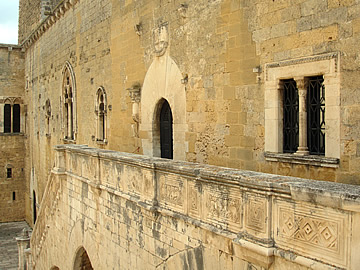
The ground floor is given over to the National Archaeological Museum but other floors have original castle rooms.
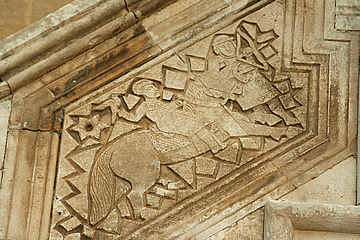
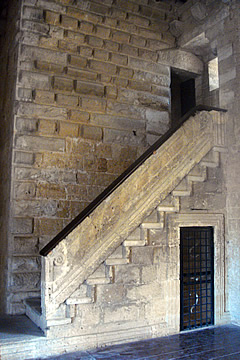
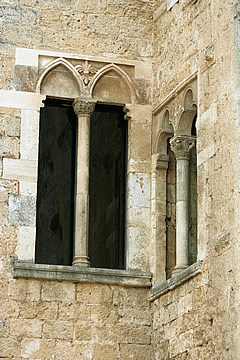
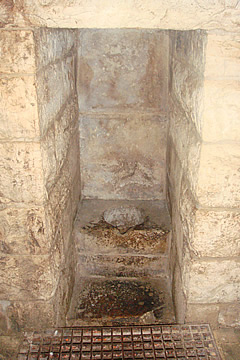
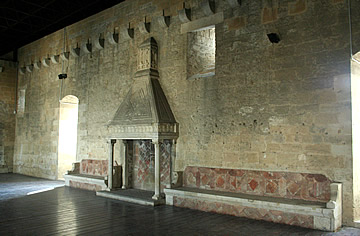
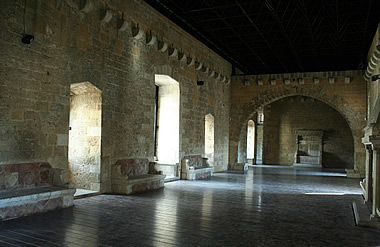
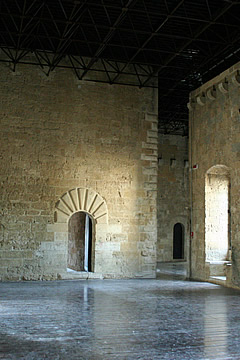
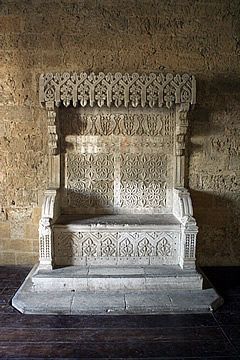
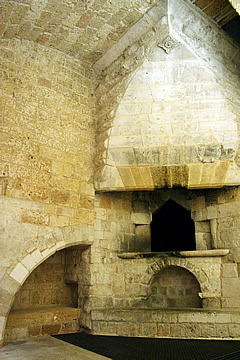
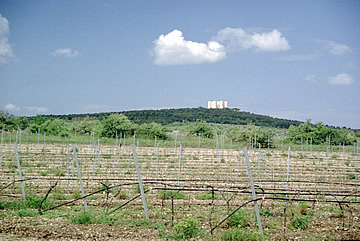
Castel del Monte (visited 2004) is something of an enigma. Standing magnificently alone on a 540m hill it has nothing to protect and few defensive features: no arrow slits, no moat or drawbridge and an unusual octagonal shape. The towers, too, are octagonal.
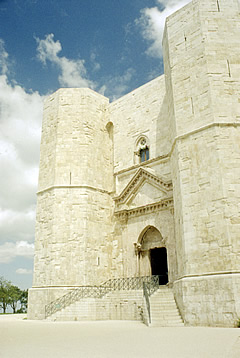
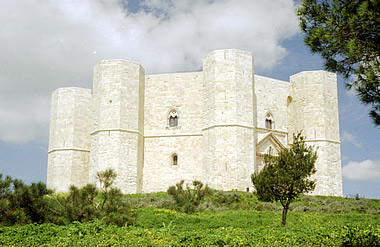
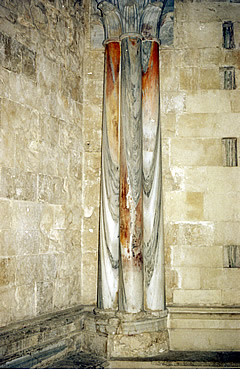
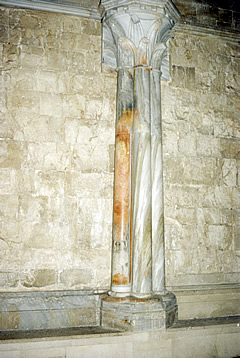
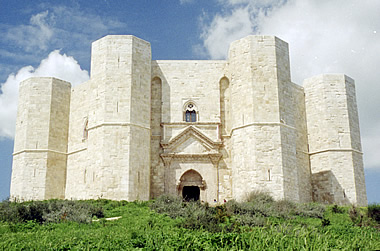
Frederick II built it in 1240 and it seems more akin to a folly, than anything else, built by aristocrats to provide interest in a garden landscape. Nobody has ever lived here, though it has been used as a prison and a refuge for people fleeing the plague in 1656.
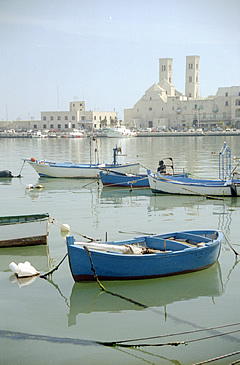
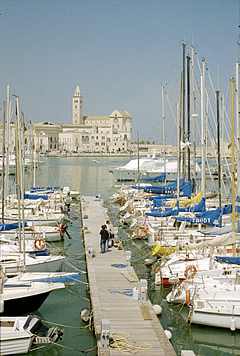
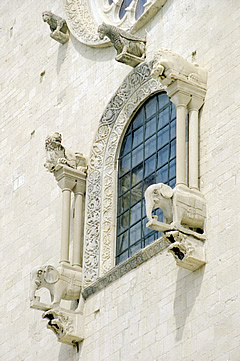
On our 2004 visit we spent one sunny day in these two seaside towns.
Molfetta is a lovely fishing port with gleaming buildings.
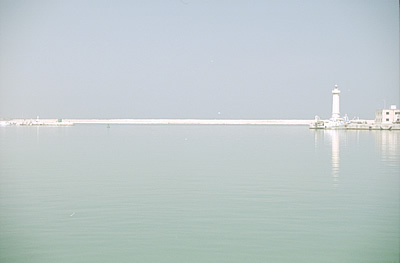
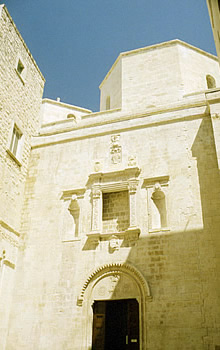
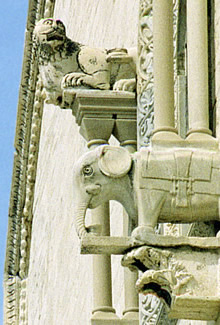
At the north west corner of town, near the harbour, the old cathedral of St Conrad was built in the regional Romanesque style in the twelfth century. Like Castel del Monte, it features octagonal building, here in the towers supporting eight triangular panels which form "domes". There is a newer 17th century Roman Catholic cathedral in the town. We wandered the narrow streets of the old town with its ancient buildings, many of which looked as if they would fall down if it weren't for the props and braces.
Trani also has a lovely Romanesque cathedral in a beautiful setting, close to the port in a wide piazza. It was built on top of a Byzantine church, itself standing over a chamber which could date back to the 6th or 7th century.
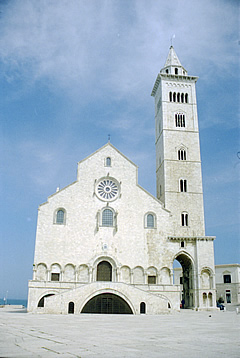
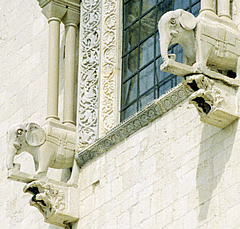
The central windows on the north front are beautifully decorated with carved animals including elephants and lions.
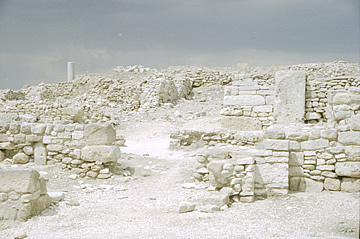
Cannae is a fascinating place. About 20km west of Trani it is the site of a famous battle fought in 216 BC close to the River Ofanto and the ancient village of Cannae. Here Hannibal smartly outmanoeuvred a much larger Roman army with a classic pincer movement. The Roman army was decimated.
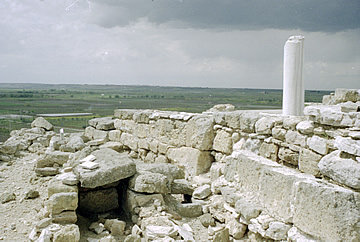
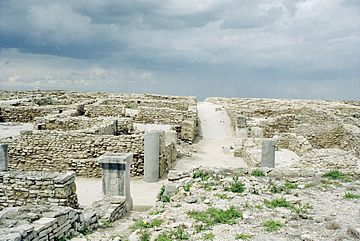
Nothing remains of the battlefield today but in 2004 we walked around the large and interesting archaeological site of the Roman and medieval town: on top of a hill there are the remains of a basilica, a castle and houses.
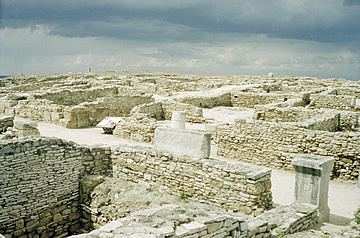
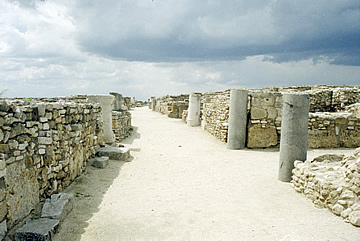
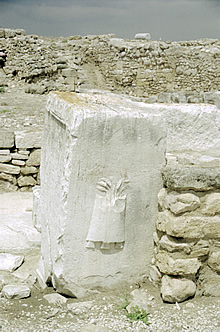
We were completely alone as we wandered around streets lined with the remains of buildings and with a view out over the very flat surrounding countryside - quite atmospheric.
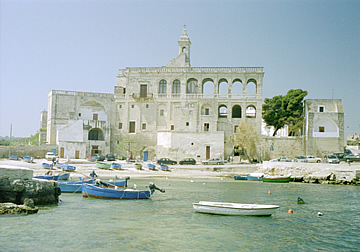
The cove at the north of the small town of San Vito is (or maybe was) my favourite place in Puglia.
The town is named for San Vito - the large Benedictine Abbey of San Vito overlooks the cove. Nearby with a lovely view out to sea is a restaurant - what more could you want!
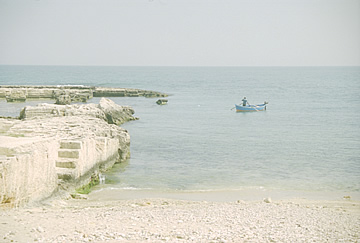
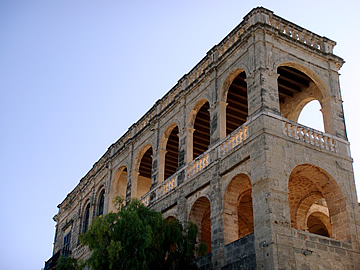
I hope it doesn't get spoilt but since we last visited in 2009 the cove has seen an increase in visitors and at least one new place to eat. The little local restaurant where we ate has been developed and I fear this once peaceful cove has lost some of its charm.
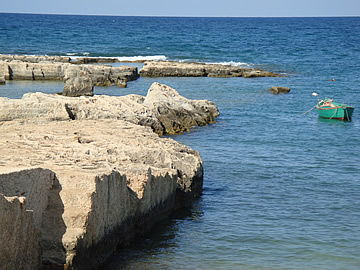
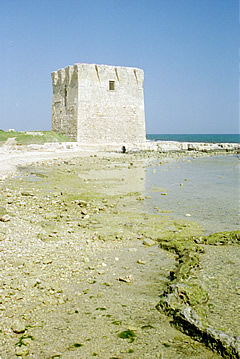
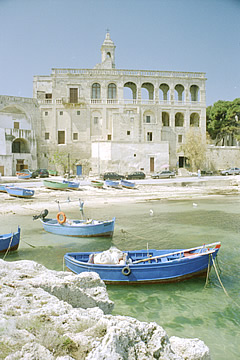
A short walk north along the shore brings you to the medieval watch tower, these can be seen all along the coast.
